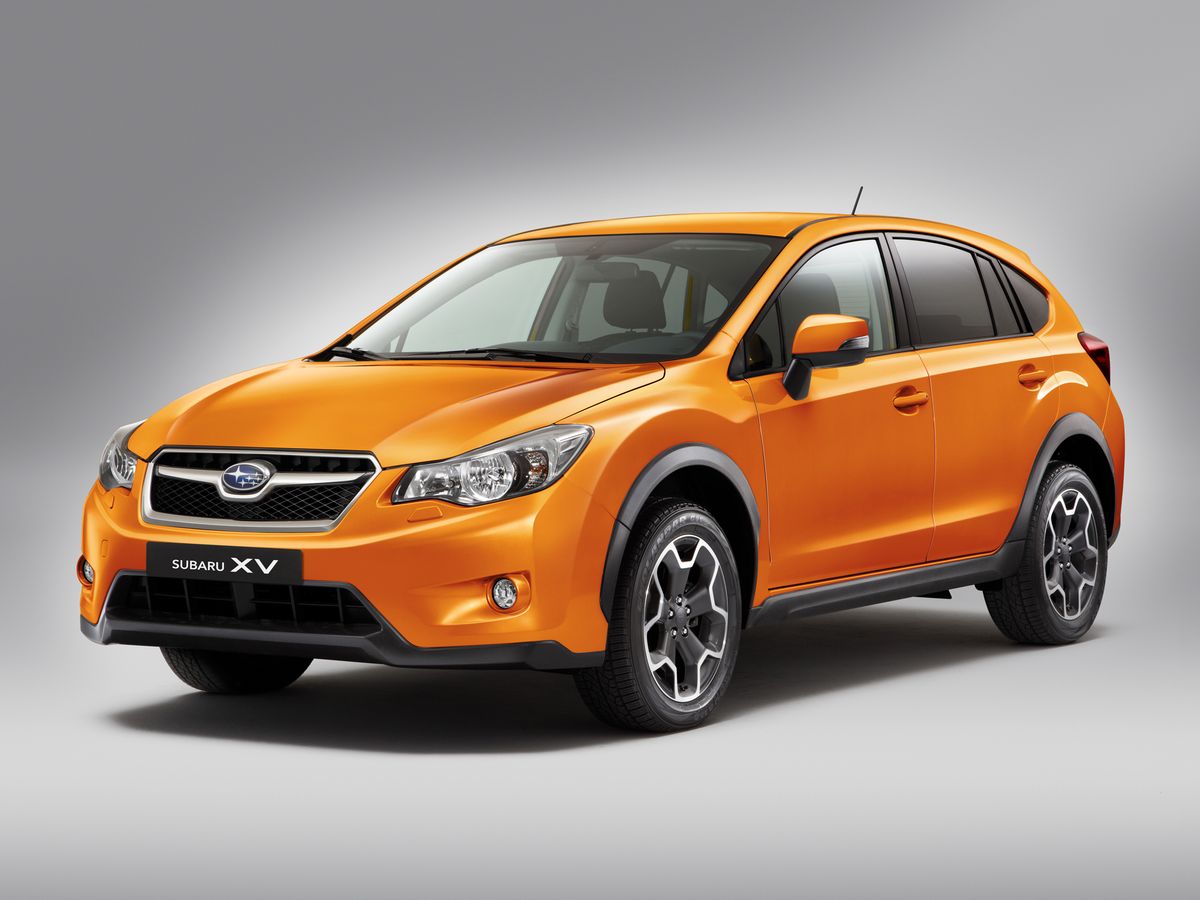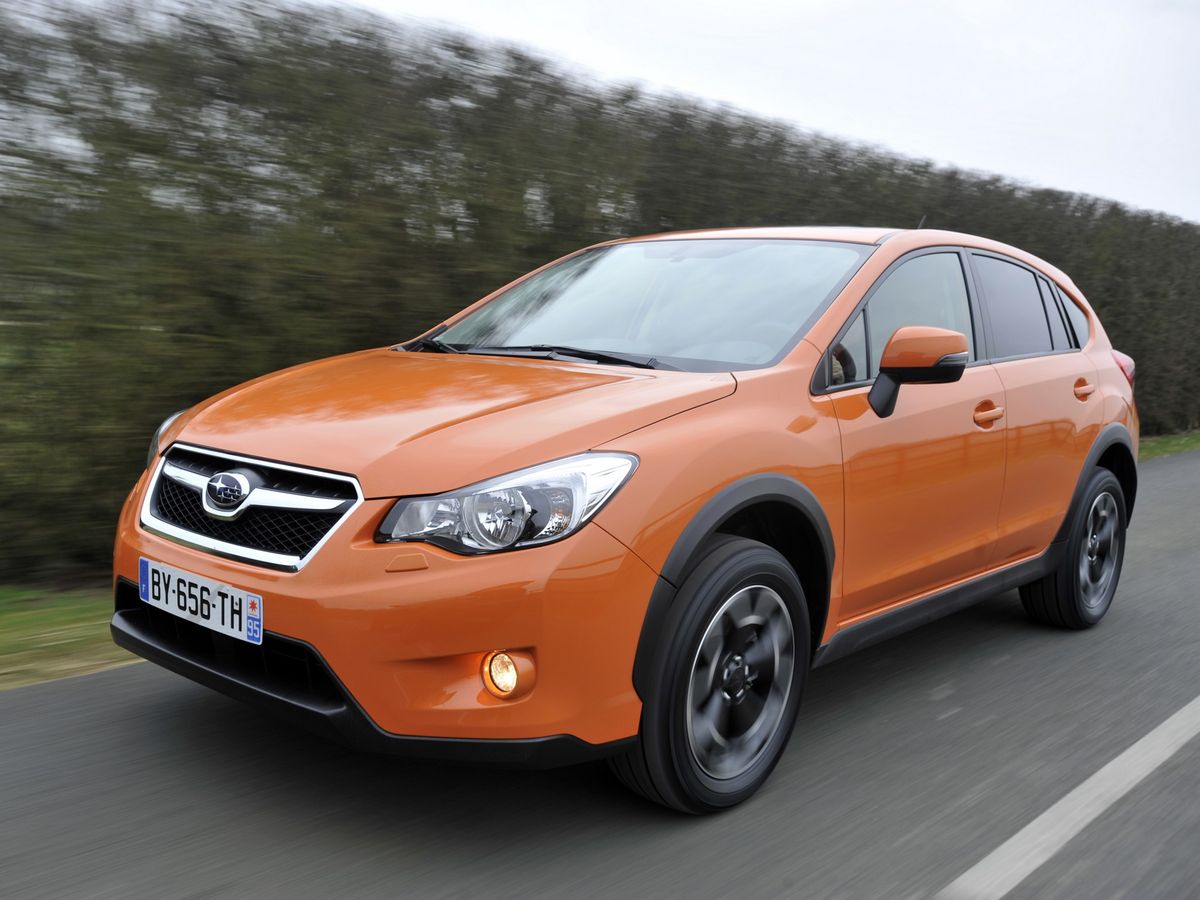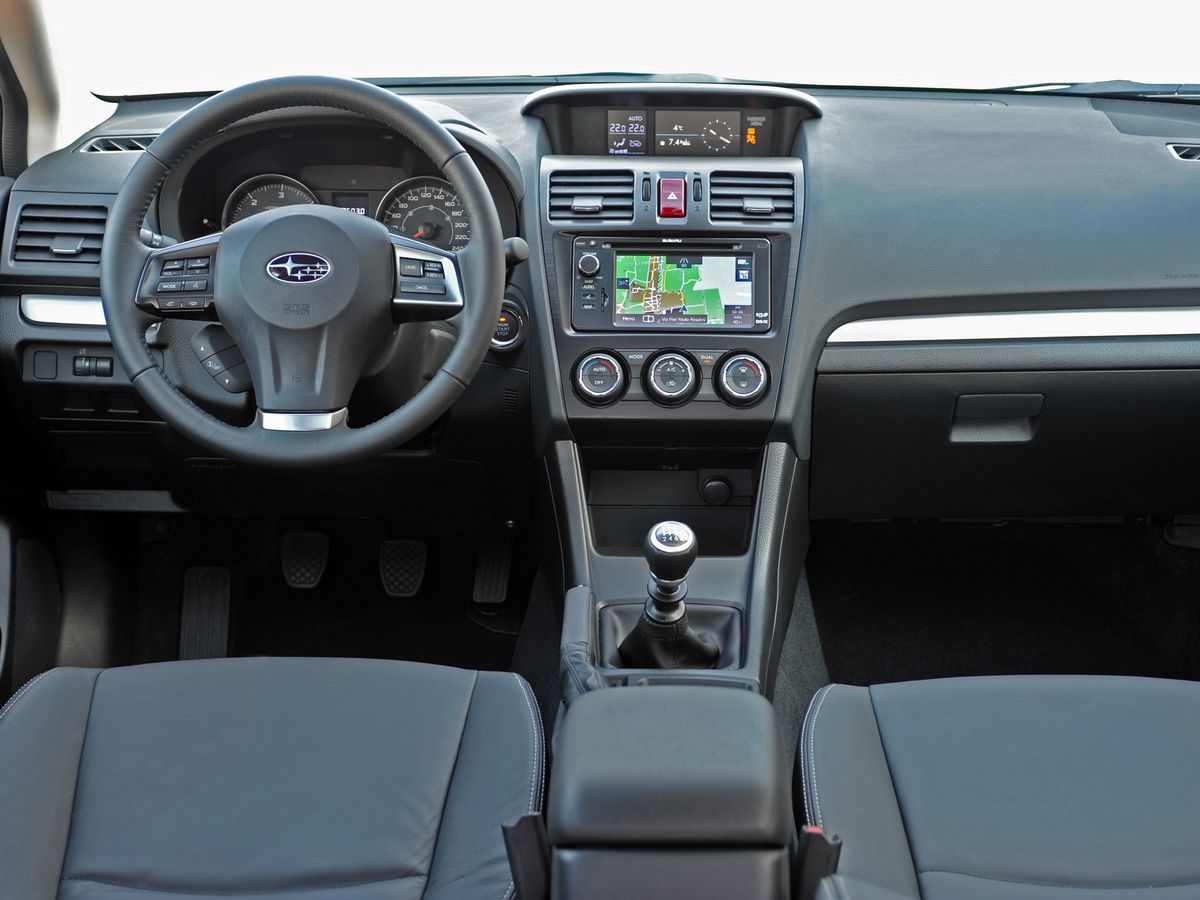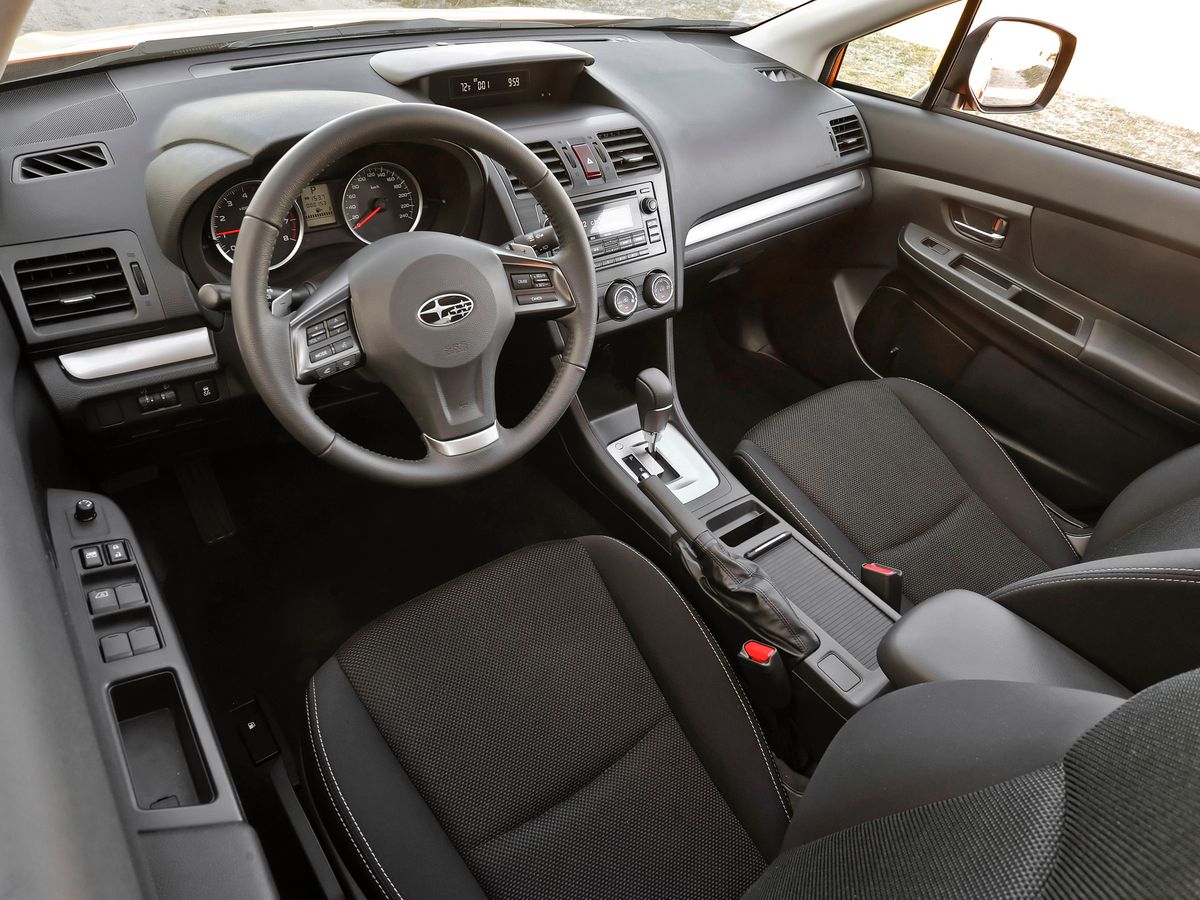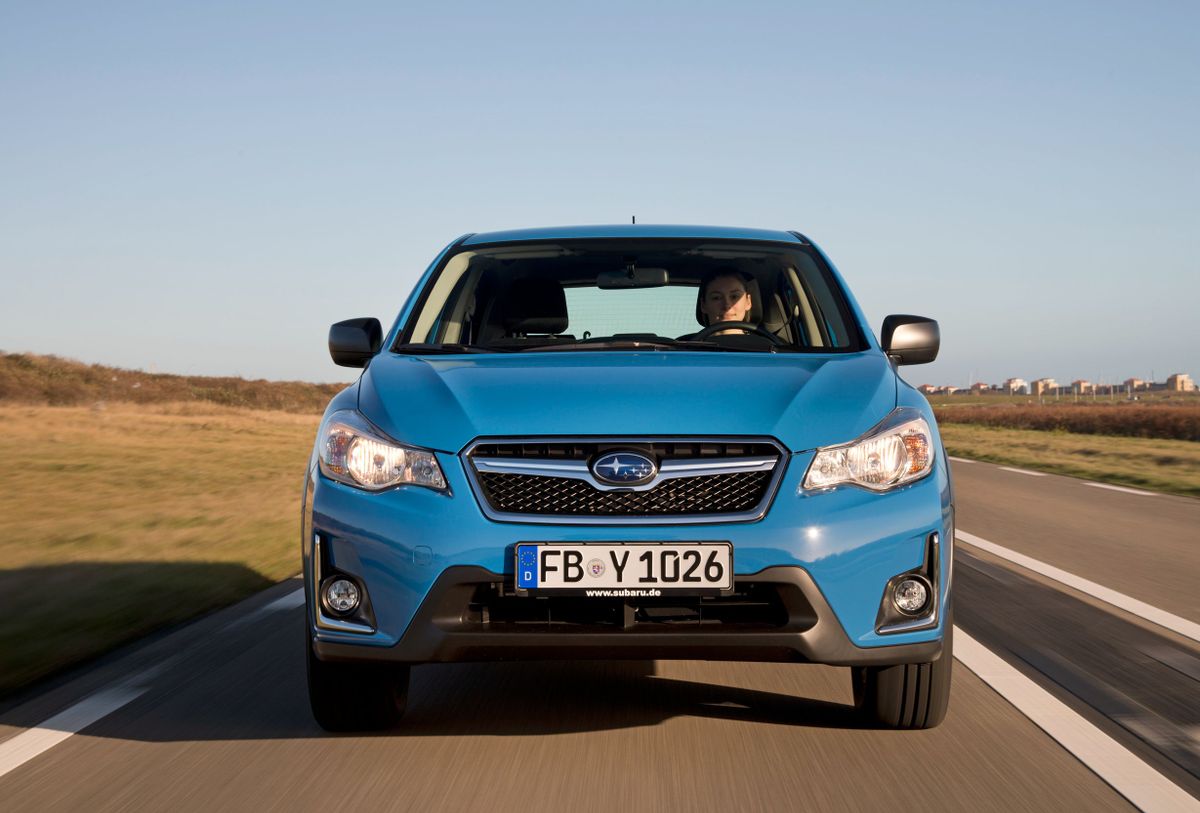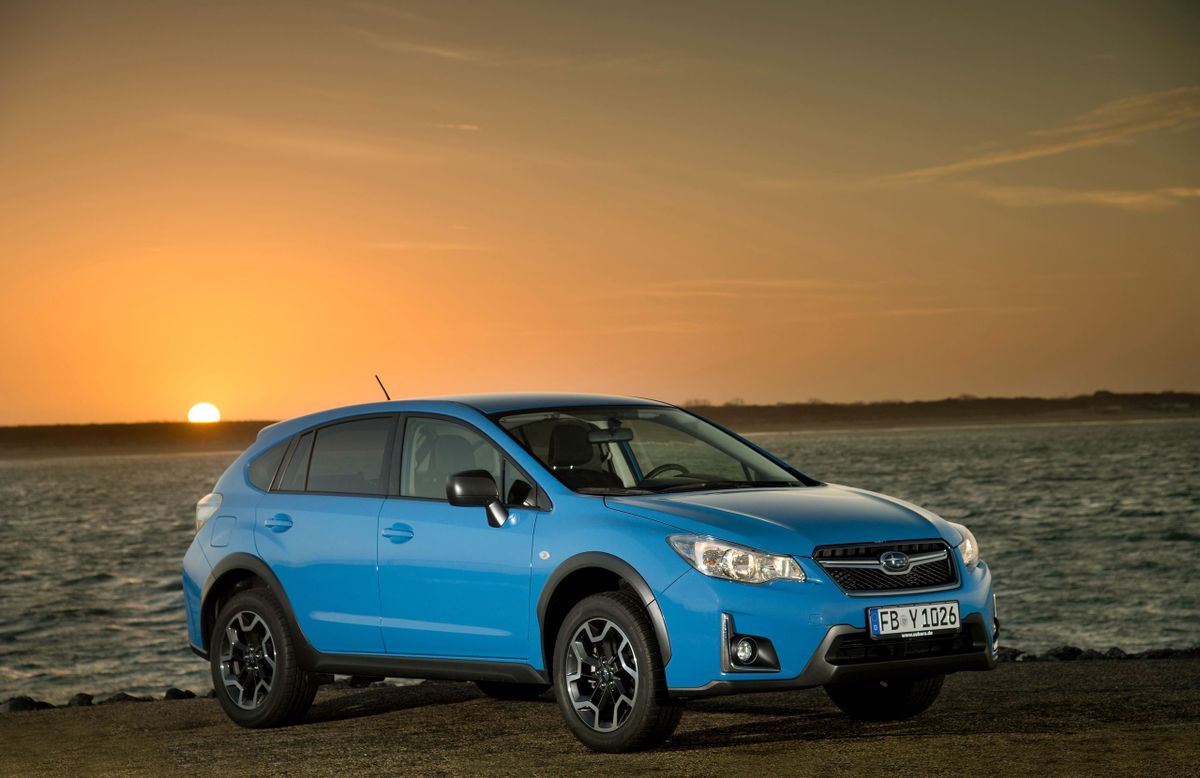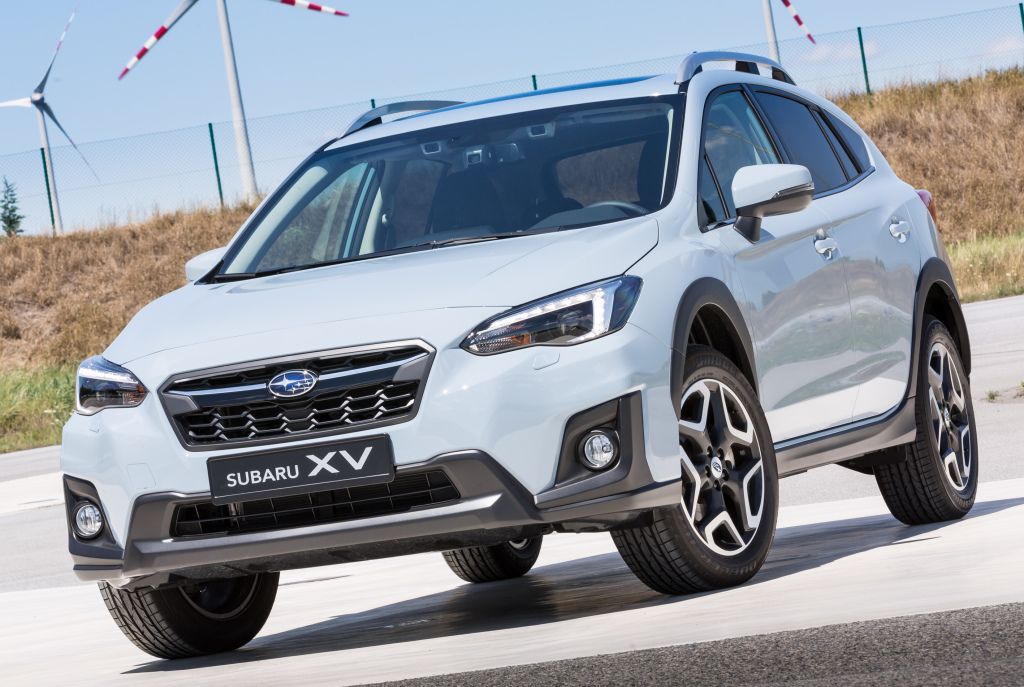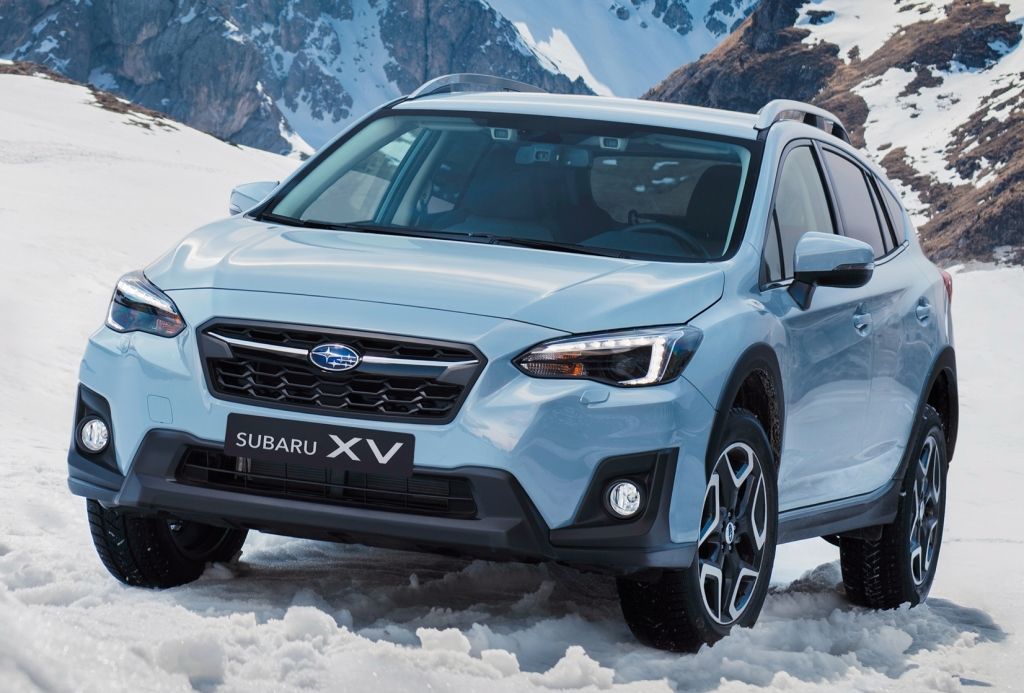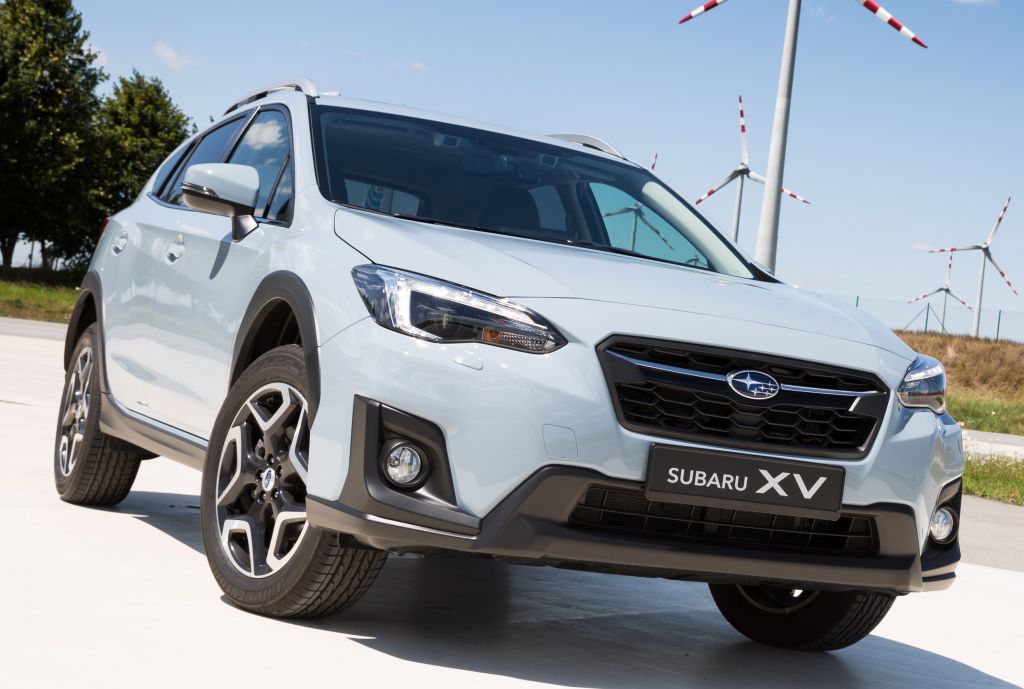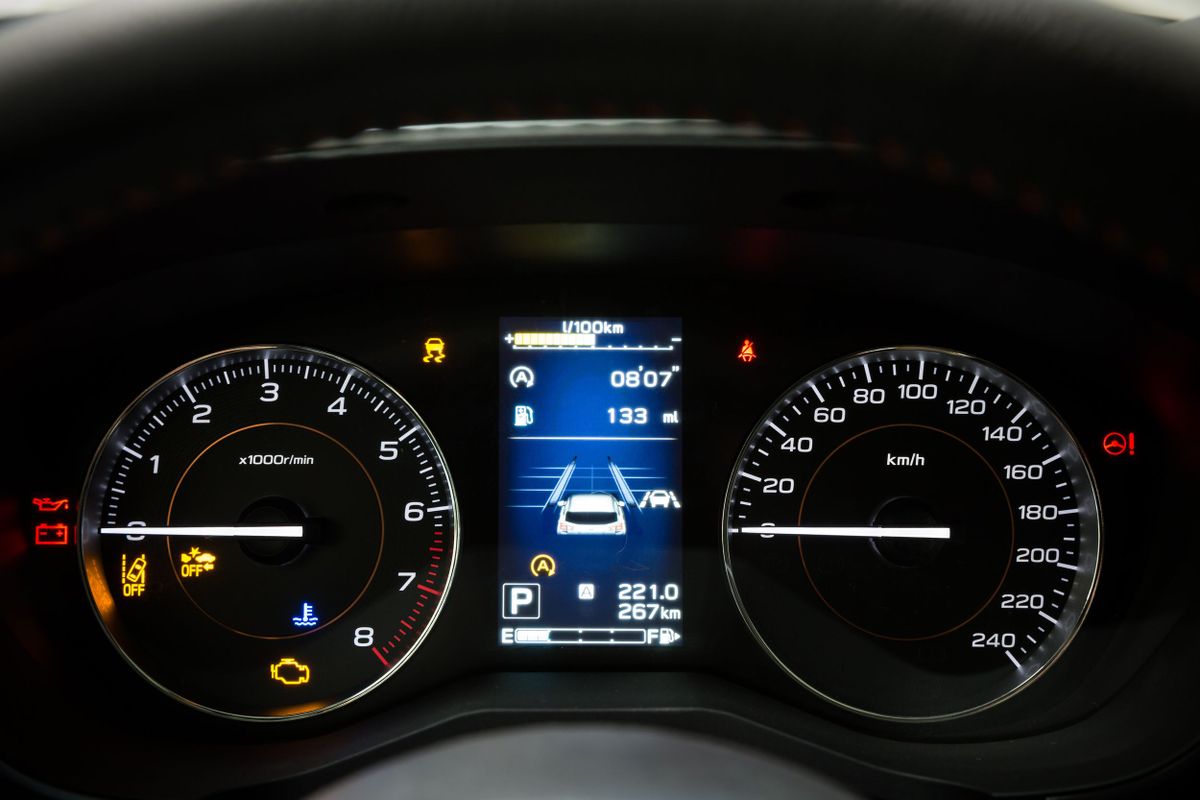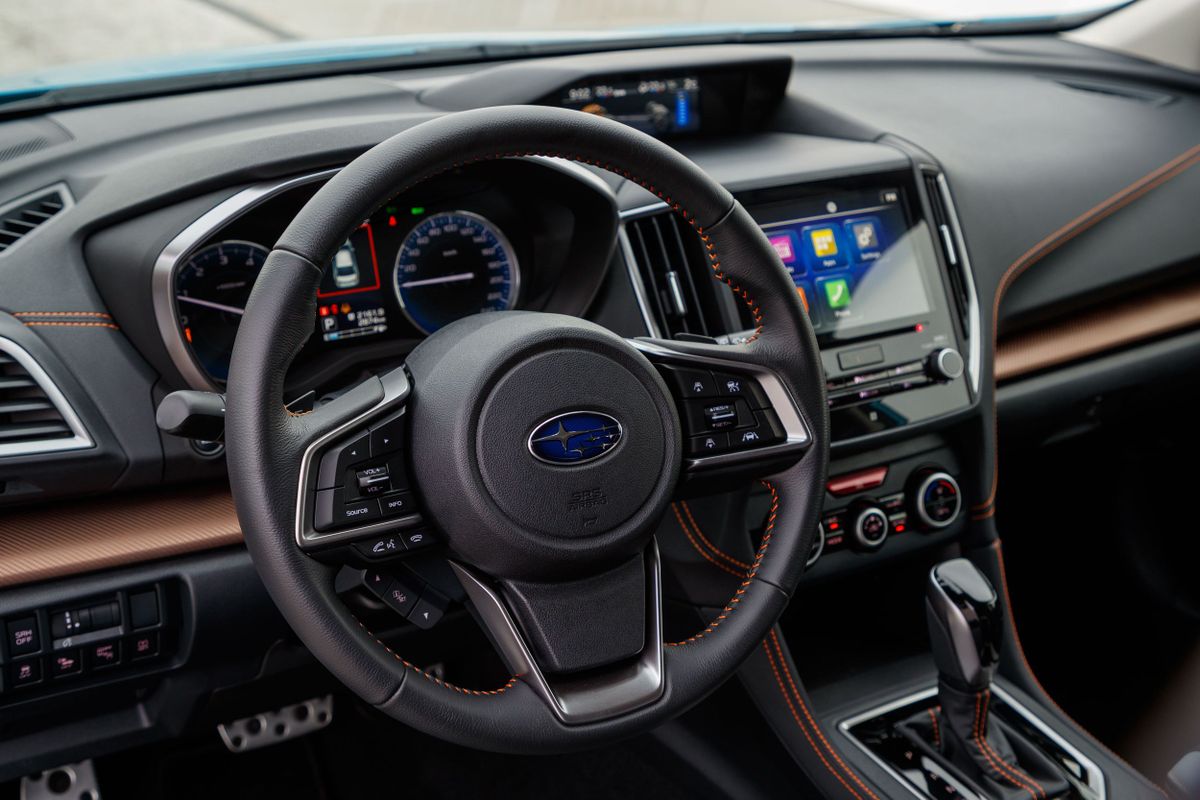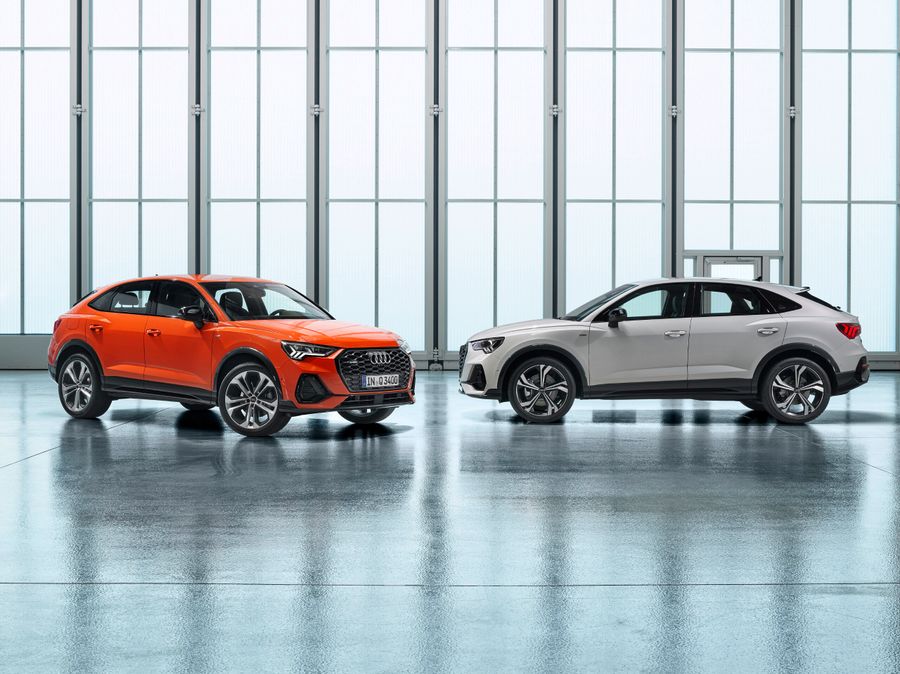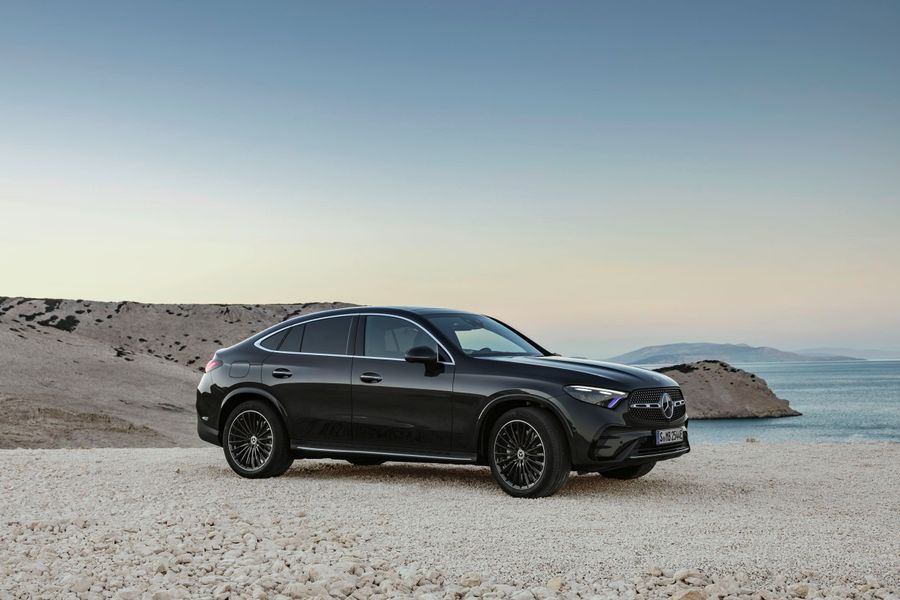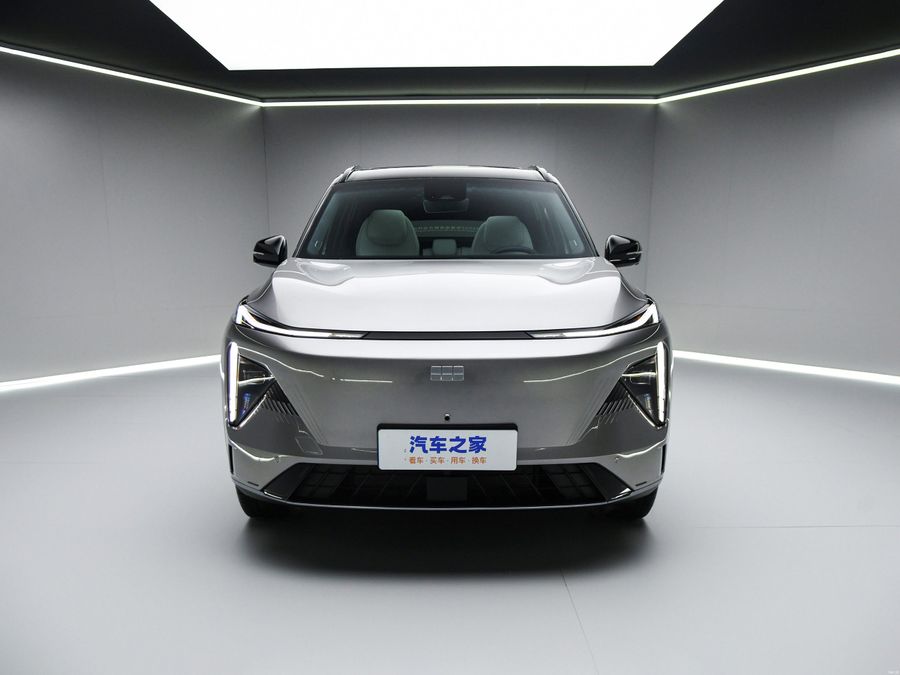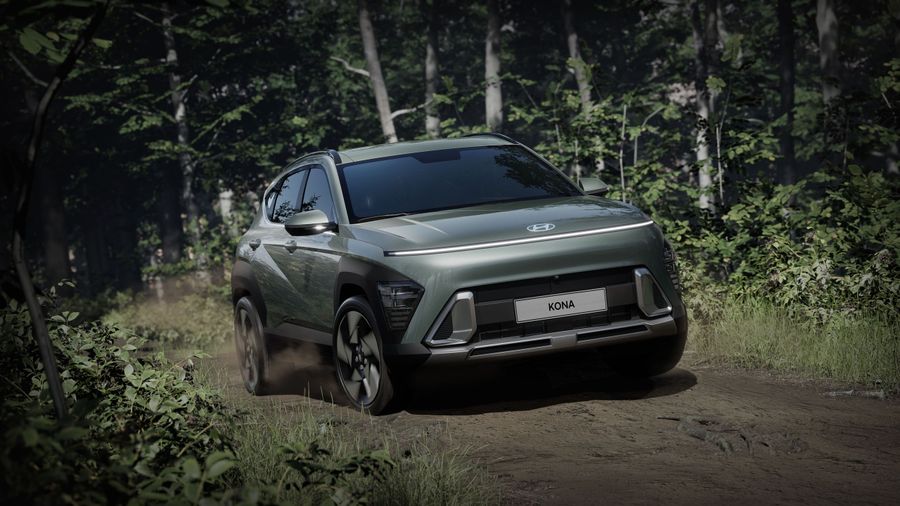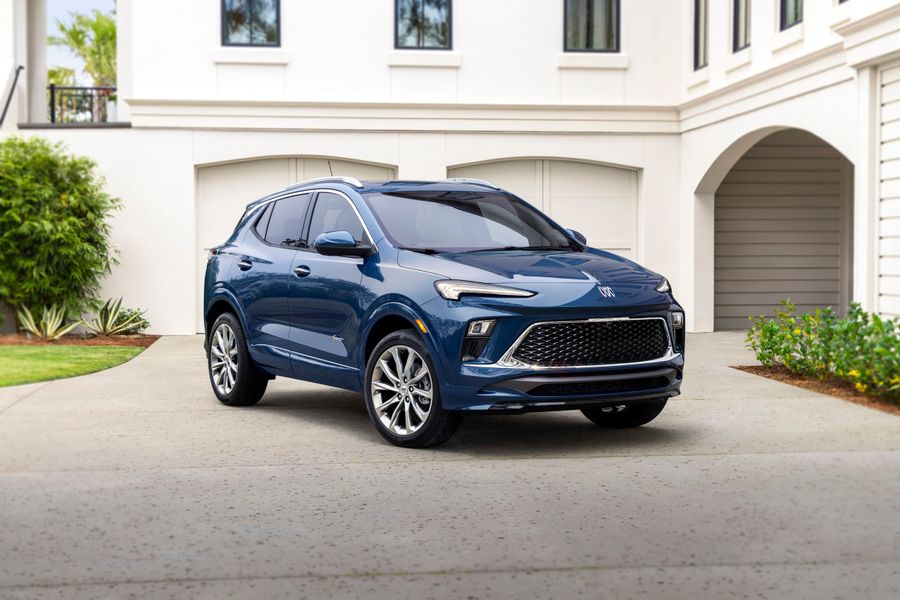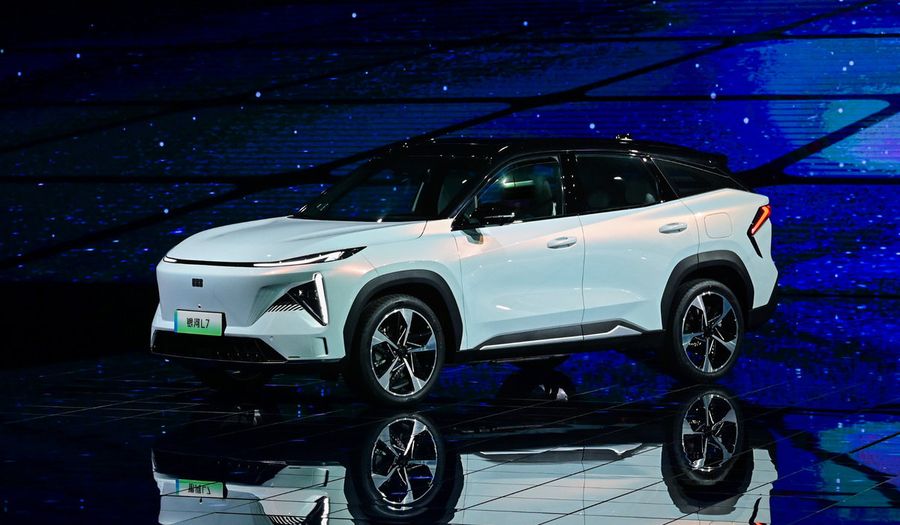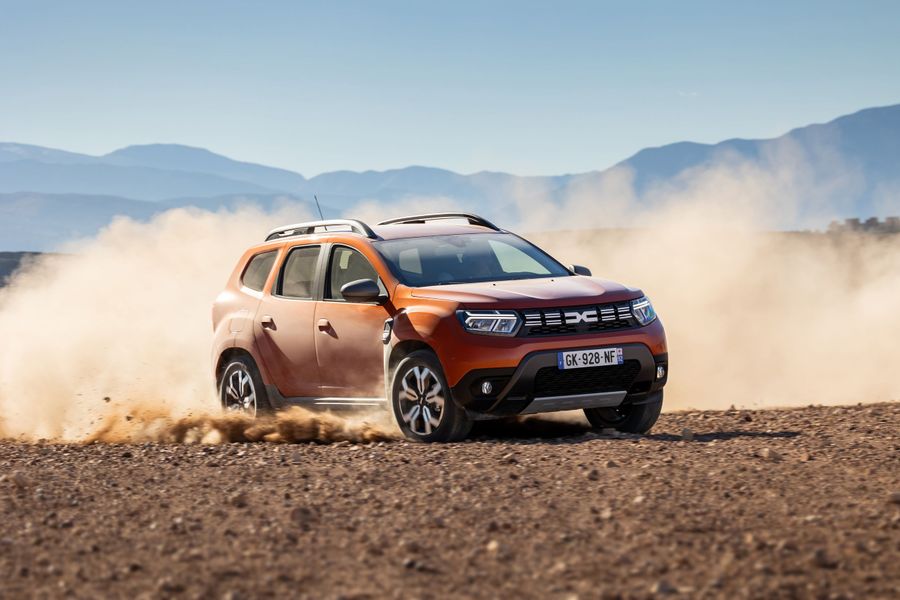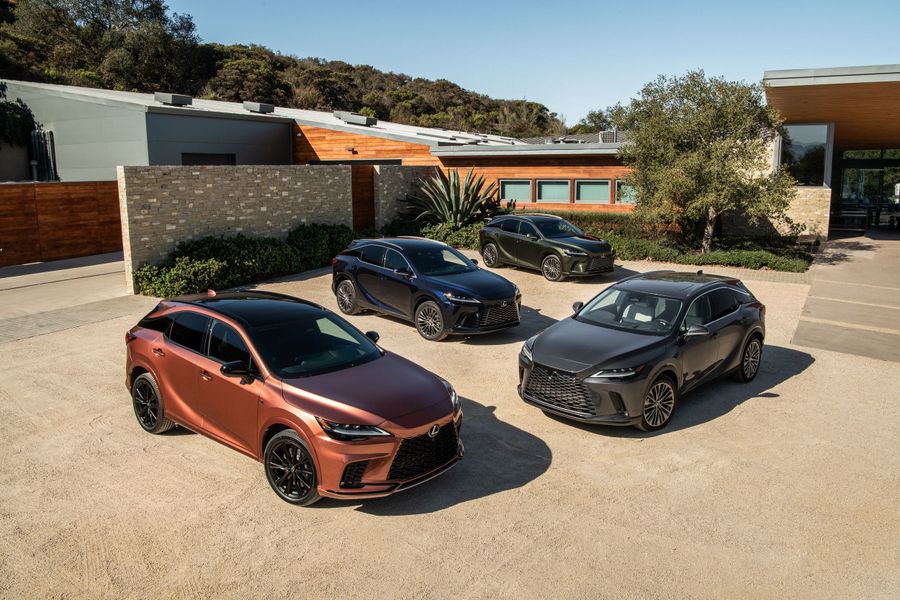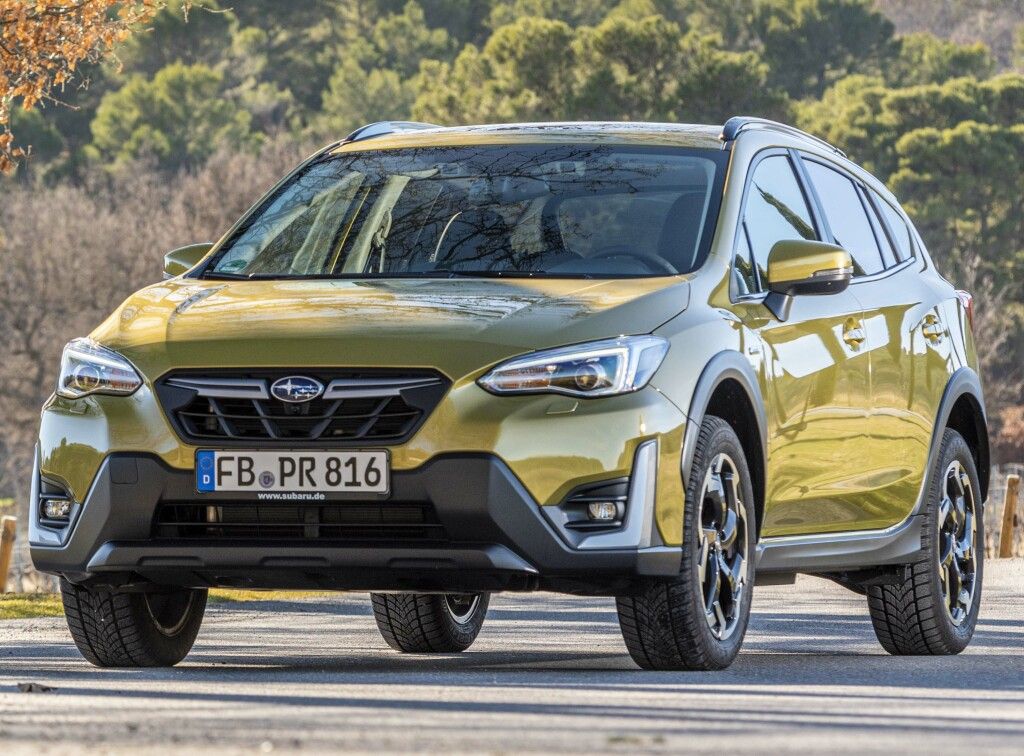
The first Pleiades star
In 2020, the second generation of the SUV was restyled.
The Subaru XV is a compact SUV produced by Subaru (‘Pleiades’), whose emblem symbolizes the eponymous cluster of stars. The five-seater vehicle has been produced since 2011 and was restyled in 2015. In 2017, the second generation of this vehicle was released. It features a signature all-wheel drive system and 1.6 and 2 liter opposed engines. Technically, the XV is not part of the Impreza family, but it is not that much different from the hatchback.
The XV SUV was based on the concept car of the same name, which was presented in April 2011 at the Shanghai Motor Show. The finished Subaru XV model was presented in Frankfurt on September 13, 2011. As conceived by the developers, the new model was supposed to be a combination of safety, functionality, style and comfortable driving. The XV was the first model to be equipped with the company’s advanced technological systems.
Exterior
The Japanese SUV had stylish elongated headlights with lens-type optics and LED daytime running lights. The vehicle featured a signature hexagonal radiator grille, which consisted of many elongated plastic cells and a thin lining. The front bumper comprised a rectangular air intake, covered with a plastic grille, that had niches on its sides containing round fog lights.
The new model was distinguished by the roof rails and special kicking plates, bumper protectors and wheel arch linings. They protected the paintwork from mechanical damage. The ground clearance of the vehicle was increased to 220 mm, but the vehicle did not acquire any special off-road skills, it was designed for the successful conquest of low-quality roads. The Subaru XV was 4,450 mm long, 1,780 mm wide and 1,570 mm high.
Safety
Despite the fact that the manufacturer classifies the Subaru XV as an independent model, it is still very close to the Impreza five-door hatchback. Here are several differences between the models. The Subaru XV is built on a platform, which was further used for other models, including the Forester. The existing chassis underwent deep changes: the wheelbase grew by 20 and was now equal to 2,635 mm, the elements of the bottom and the ‘cup’ of the front suspension were reinforced, and the rear floor loading pattern was modernized to minimize the deformation of the passenger compartment. Subaru also increased the foam energy absorbing element and the lower center bumper bracket. The interior was protected from side impacts by new high-strength elements in the doors, while the driver and front passenger were protected by the fore body modifications (front panel, A-pillars).
The design of seats made it possible to reduce the risk of neck injury. The front passenger airbag is folded in the center so that the passenger’s neck is exposed to less impact. The side airbags have been designed to reduce the severity of injuries in unusual situations, for example, when a child is leaning towards a door. As a result, according to Euro NCAP, adult passengers are protected by 94%, children by 89%, and these are very high rates.
Interior
The Subaru XV interior is distinguished by high quality materials and finishing. Like all other cars of the brand, it is extremely functional and simple. The dashboard is traditional and equipped with an information display. The more expensive version equipped with a two-liter engine has two color monitors in the front panel. The first one is located at the top and is for informational purposes: it displays on-board computer readings, fuel consumption graphs, and navigation system tips. It is possible to display a schematic image of a four-wheel drive, and if ESP is activated, the display will show which wheels are slowing down and at what moment. As for the second color display with a touch-screen function, it manages the multimedia functions of the vehicle and is able to play video from external media.
The interior looks quite spacious. Compared to the previous Impreza, the bases of the windshield pillars are 200 mm forward, the pillars themselves have become thinner (they are made of extra high-strength steel), and the outside mirrors are larger. All of this contributes to excellent visibility! As for the shortcomings, the SUV has a relatively small trunk compartment (309/1,200 l).
Power trains and chassis
The Subaru XV was equipped with three engines: 1.6 and 2 liter opposed petrol engines, a two-liter diesel engine, as well as a hybrid modification based on a 2-liter engine. The ‘younger’ opposed FB16 (1.6 liter) engine was aggregated with a five-speed manual transmission, and the two-liter FB20 engine was paired with a six-speed transmission. A CVT transmission was optional. The vehicle could only be all-wheel drive.
Subaru developed new FB engines to replace the EJ series, which had been installed on the brand’s cars since the start of production in the 1990s. The new FB range retained the advantages of horizontally opposed engines, while ensuring better fuel-efficiency. This was achieved by improving combustion efficiency and reducing friction. Plus it was possible to significantly reduce the amount of exhaust gas emissions. The manufacturer developed a more compact combustion chamber, improved the shape of the intake openings and valves and optimized the position of the injectors. The vehicle featured a lighter design of pistons, connecting rods and other assemblies. At low engine speeds, the SUV produced a high torque and accelerated quickly and steadily. The engine became a little more long-stroke and a little more high-torque in the mid-range zone. The compact combustion chamber, lightweight pistons and roller tappets allowed saving up to 10% of fuel.
As conceived by the developers, the Subaru XV had to combine safety, functionality, style and comfortable driving. The XV was the first model to be equipped with the company’s advanced technological systems.
The 2.0L Turbocharged Subaru Boxer Diesel DOHC engine was characterized by high rigidity, smoothness, light weight, compact design, fast accelerator response with high torque even at low engine speeds, low carbon dioxide emissions and increased efficiency.
A new, lightweight, compact and more environmentally friendly Lineartronic CVT transmission was developed for the Subaru XV. The vehicles equipped with this transmission could accelerate to 100 km/h for in 13.8 seconds (1.6-liter engine), in 10.7 seconds (2-liter engine) and in 9.3 seconds (diesel engine). The maximum speed was 179, 187 and 198 km/h, respectively.
As for the chassis, the vehicle does not fundamentally differ from the Impreza, as the structure is the same (MacPherson strut at the front and a double-wishbone suspension at the rear). However the suspension was significantly modified taking into account the increased ground clearance and a higher center of gravity of the SUV: the front struts had reinforced upper supports, and the steel anti-roll bars became stiffer. The Subaru XV was standardly equipped with electric power steering and disc brakes (front ventilated disc). The vehicles with the CVT transmission had their own symmetric all-wheel drive scheme with active torque distribution and LSD rear differential, while those equipped with the manual transmission had a center differential and a locking viscous coupling.
Equipment
As for the standard equipment of the basic trim level, it comprised fog lights, headlight washers, heated mirrors, tilt and reach adjustable steering column, dividing armrest, heated front seats, power windows, climate control, 4 speakers, and AUX connector. More expensive trim levels offered chrome door handles, leather steering wheel, leather upholstery, start button, dual-zone climate control, electric driver’s seat, electric sunroof, 6 speakers, USB connector, and Hands free system.
Moreover, the standard equipment included front airbags (driver and front passenger ones), ISOFIX mount, belt tensioners, a set of active systems (ABS, EBD, auxiliary braking systems, Vehicle Dynamics Control (VDC), hill start assist). The more expensive versions had side airbags and curtain airbags, cruise control, adaptive road lighting, rain and light sensors.
The original exterior and undeniable advantages of this SUV allowed it to be highly appreciated all over the world. It was produced from April 2012 to June 2016, after which it was replaced by restyled versions.
2016 restyling
The restyled version of the first generation XV SUV was distinguished by minor changes in its exterior. The changes were made to the headlights, front bumper, radiator grille and wheel rims. As a result, the Subaru’s exterior became more eye-catching, which was especially apparent from the following details: the hawk-eye headlights, the trim of the fog lamp sections, the LED elements in the taillights, the enlarged rear spoiler, which provided better protection from the dirt that could get on the rear window while driving. Interior changes included higher quality materials, orange (instead of white) seat stitching, a new infotainment system with a seven-inch display, and a new color driver information display.
The vehicle’s fuel efficiency was improved. It was equipped with a two-liter horizontally opposed engine with 156 hp, coupled with a 6-speed manual transmission or CVT). In the urban cycle, the vehicles equipped with the manual transmission consumed 9.6 l/100 km, while the vehicles equipped with the CVT consumed 9.1 l/100 km. Outside the city, they could consume 6.1 and 5.7 liters per 100 km, respectively. Experts noted that the restyled Subaru XV made a small step forward in terms of steering response and dynamics. The steering wheel became a little more responsive and more informative, while the upgraded CVT showed even greater fuel-efficiency and good dynamics. The vehicle could boast of better travelling comfort ach and sound insulation.
The second generation
It has been produced from 2017 to the present (as of 2021). The second generation SUV has become much longer and wider (by 15 and 20 mm, respectively), the body has become stiffer by as much as 70%, and its fundamentally new power structure is able to absorb impact energy 40% more efficiently. The exterior has become bolder, although in general the angular body shapes are the same and cannot be smoothed out: the underlying global platform dictates the relative position of the units, the front axle and the pedal unit.
The length and width of the new XV have changed slightly, but the modular matrix has given the rear passengers as much as 40 mm of free space due to the increased wheelbase, but the overhangs have become smaller. All seats are comfortable. There are three information displays for the driver (in the dashboard, at the top of the front panel and on the center console). The modified interior heater is noticeably quieter and more efficient. The engine and the engine compartment have become significantly quieter.
Power trains and chassis
As before, the vehicles are all-wheel drive only, and there are two petrol engines. Traditionally, there is a choice between a 1.6 liter horizontally opposed engine (114 hp, 150 Nm) and a 2 liter (156 hp, 196 Nm) engine. The transmission is an upgraded Lineartronic CVT, and there are no other options.
The rear anti-roll bar is now integrated (on the previous vehicle, it was attached to the subframe), the center of mass has been lowered by 5 mm, and the steering gear ratio has decreased by a whole unit. The fast drivers will like the modifications and the active thrust vector control, which now is also available on the XV (the inner wheels slowing down when turning). The vehicle can boast of an excellent steering response. The ground clearance (220 mm) and the Subraru’s signature energy intensity of the suspension are the same, there are fewer vibrations, and the swinging and rolls are barely noticeable. The new XV has inherited the X-Mode off-road system, which makes it safe to drive on slippery top-soil roads, complicated by turns and holes.
Equipment
The Subaru brand uses a set of electronic assistants EyeSight, including an automatic braking system, adaptive cruise control, as well as lane keep assist system and adaptive turning headlights. In fact, the system recognizes cars in front, pedestrians, road markings and other objects, and can also assess the driver’s fatigue and notify that the car in front has started moving. The new 2020 Subaru XV uses the radars to monitor blind spots, even when leaving the parking lot in reverse. Parking is assisted by a color camera and ultrasound scanners. The automatic braking system is activated if the driver missed an obstacle.
The basic version of the SUV has seven airbags (including the driver’s knee one), single-zone climate control, a media system, heated front seats and wiper rest zones, a multifunction steering wheel, rain and light sensors, fog lights, 17-inch alloy wheels and an X-Mode system, which adjusts the parameters of the engine, transmission and stabilization system on slippery roads. Advanced trim levels include: LED headlights, dual-zone climate control, a leather-wrapped heated steering wheel, paddle shifters for quasi-gear selection, a rear-view camera and roof rails, an EyeSight system, a navigator and a sunroof.



